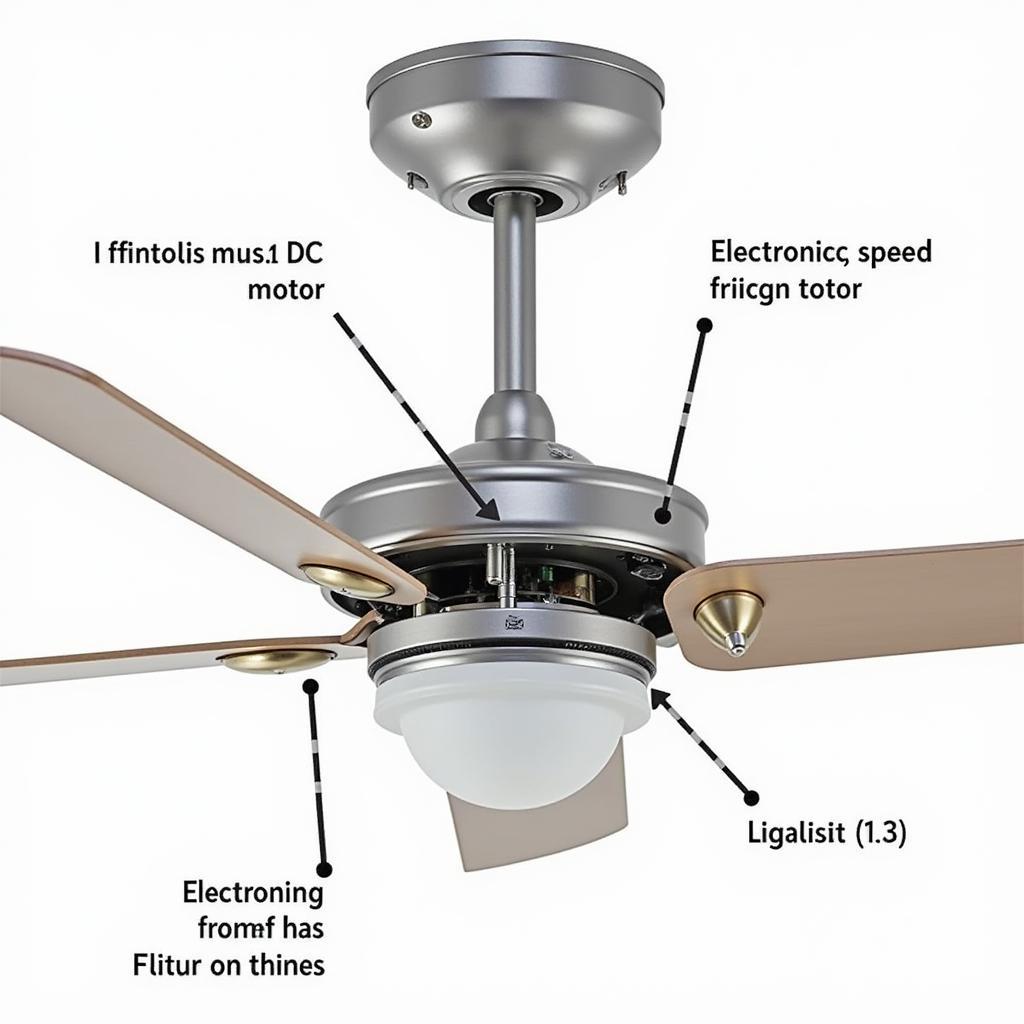Ceiling fans are a staple in many homes, offering a cost-effective way to stay cool and comfortable during warmer months. But did you know that the design of your ceiling fan can significantly impact its energy efficiency? By understanding the factors that contribute to energy savings, you can make informed decisions when choosing or upgrading your ceiling fan and maximize your home’s energy efficiency.
How Ceiling Fan Design Impacts Energy Efficiency
While often overlooked, the design of a ceiling fan plays a crucial role in determining how effectively it circulates air and, consequently, how much energy it consumes. Here’s a closer look at the key design elements to consider:
Blade Shape, Pitch, and Number
- Blade Shape: Aerodynamically designed blades, often with a slight curve or twist, are more efficient at moving air. These shapes minimize drag and maximize airflow, allowing the fan to operate at lower speeds while still providing effective cooling.
- Blade Pitch: The angle at which the blades are set is called the pitch. A steeper pitch generally moves more air but requires more energy. Finding the optimal pitch for your room size and ceiling height is essential for balancing airflow and energy consumption.
- Number of Blades: Contrary to popular belief, more blades don’t necessarily equate to better airflow. While more blades can create smoother airflow, they also increase drag, potentially reducing efficiency. Three to five blades are generally considered optimal for most residential ceiling fans.
Motor Type and Efficiency
- Motor Type: Ceiling fans typically use either AC (alternating current) or DC (direct current) motors. DC motors are generally more energy-efficient than AC motors, consuming up to 70% less energy for the same output. They also offer a wider range of speed settings and quieter operation.
- Motor Efficiency: Look for fans with high-efficiency motors. These motors are designed to reduce energy loss and operate at a lower wattage, leading to significant energy savings over time.
 Energy-Efficient Ceiling Fan Motor
Energy-Efficient Ceiling Fan Motor
Fan Size and Room Compatibility
Choosing the right size ceiling fan for your room is crucial for optimal performance and energy efficiency. A fan that is too small for the space will need to work harder and consume more energy to circulate air effectively. Conversely, a fan that’s too large can create excessive drafts and unnecessary energy consumption. Consult a sizing guide based on your room dimensions to determine the appropriate fan size.
Control Options and Features
- Speed Settings: Multiple speed settings allow you to adjust the fan’s output to your comfort level and the season. Lower speeds consume significantly less energy and are often sufficient for gentle air circulation.
- Timers and Remote Controls: Timers enable you to set the fan to run for a specific duration, while remote controls offer convenient speed and lighting adjustments from anywhere in the room. These features can help reduce unnecessary energy use.
 Ceiling Fan Control Options
Ceiling Fan Control Options
Conclusion
Investing in energy-efficient ceiling fans is a smart choice for any homeowner looking to reduce their environmental impact and save on energy bills. By understanding the design factors that influence a ceiling fan’s energy consumption, you can make informed decisions to optimize your comfort and energy savings. Remember to look for fans with aerodynamic blades, efficient motors, appropriate sizing, and convenient control features to maximize your investment and enjoy year-round comfort.


